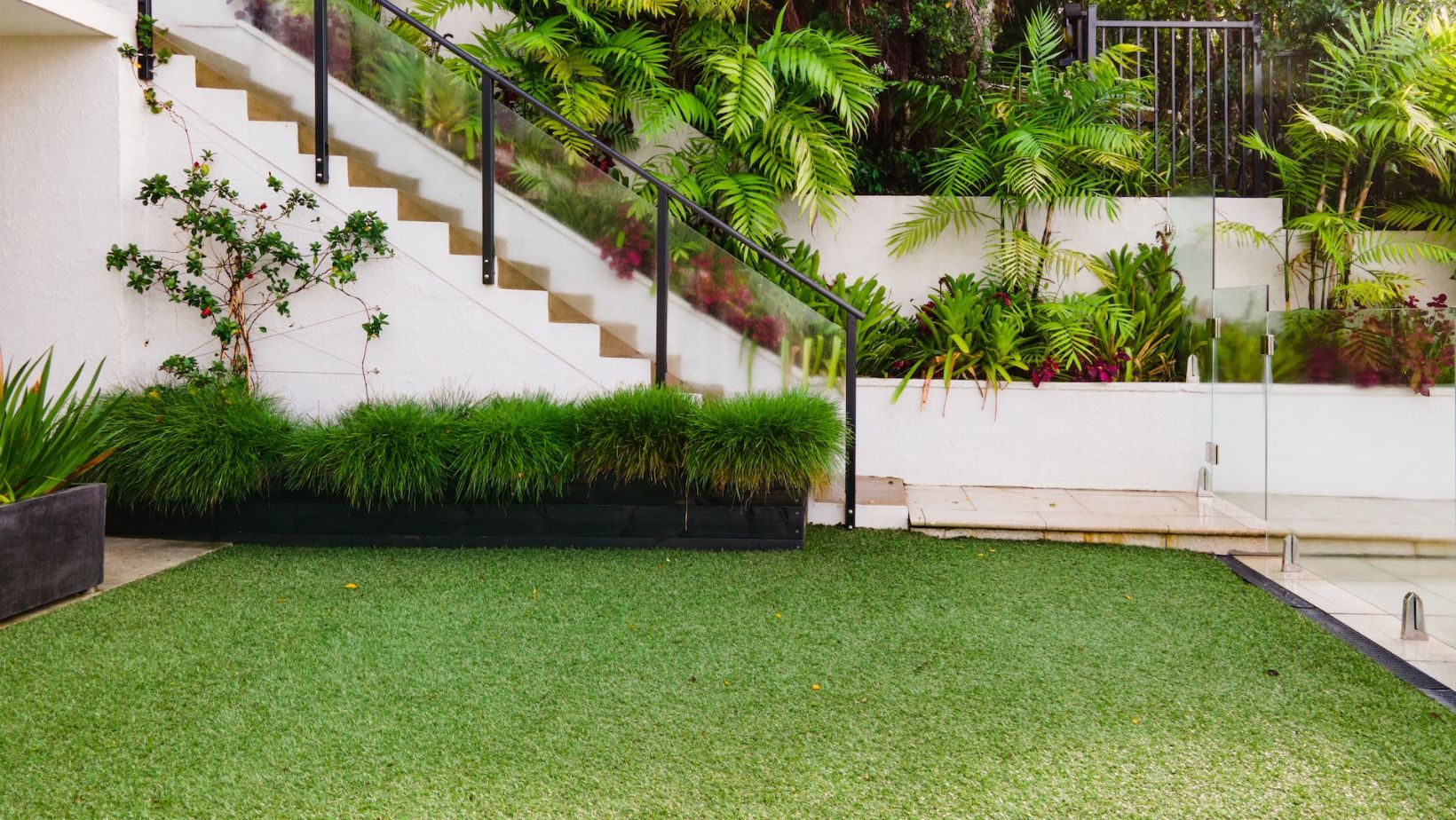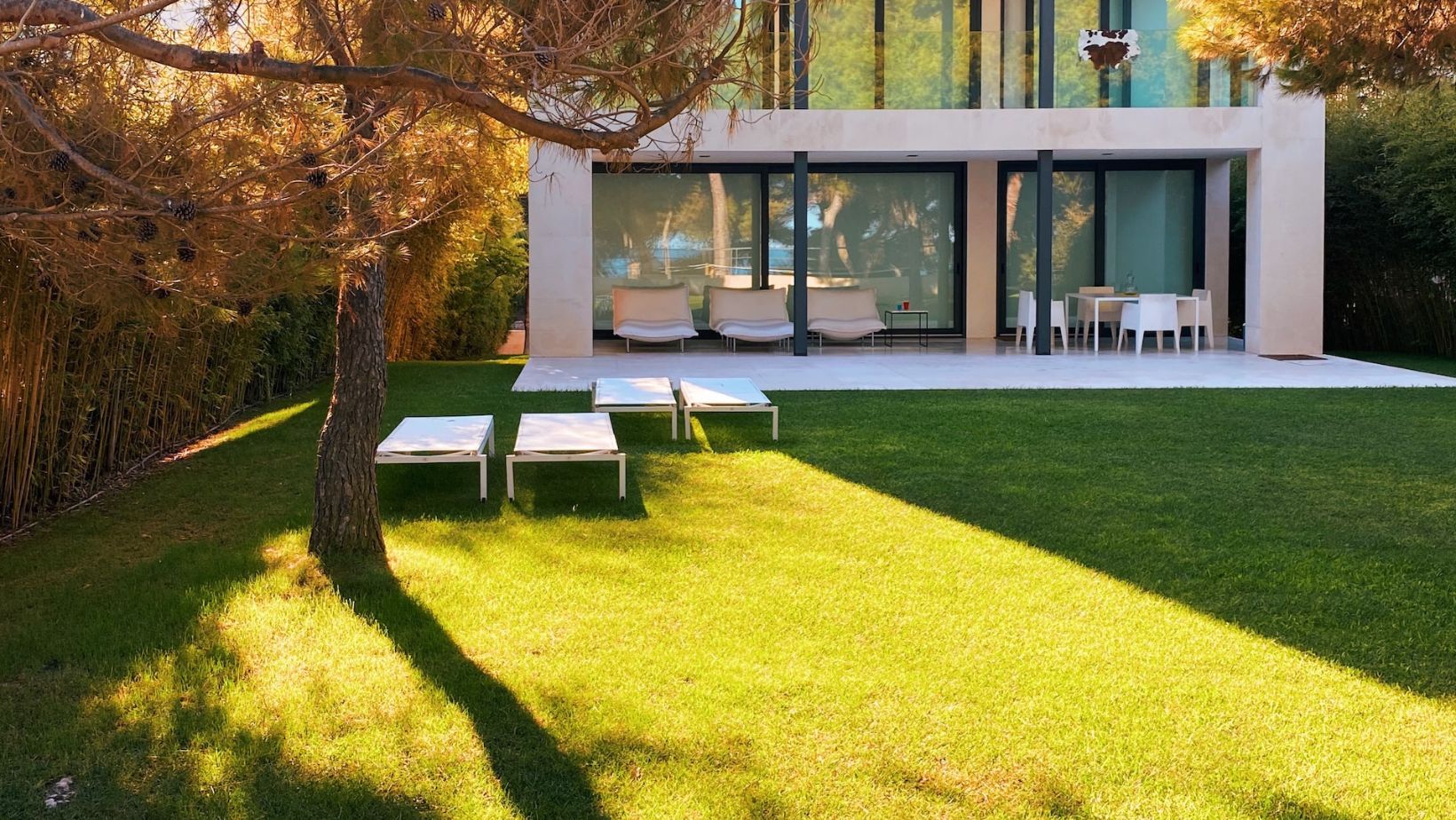This article presents an exploration of various decorative lawn edging options. By examining the diverse range of materials and designs available, readers will gain insights into the aesthetic possibilities to enhance their outdoor spaces.
The discussion encompasses metal, stone, brick, wood, plastic, and rubber, as well as incorporating plants and flowers for edging purposes. Approaching this topic with an academic tone allows for a comprehensive analysis of these options while maintaining an objective and impersonal perspective throughout.
Table of Contents
ToggleKey Takeaways
- Metal lawn edging options provide durability and a clean look, with options such as steel, aluminum, wrought iron, copper, and brass.
- Stone and brick edging options, such as flagstone, limestone, granite, and brick, offer a timeless charm and structured, formal look with easy installation.
- Creative wood edging designs, including log edging, picket fence edging, bamboo edging, and railroad tie edging, provide a rustic, charming, and natural look that blends well with the surroundings.
- Plastic and rubber lawn edging options, such as plastic (HDPE or PP) and rubber (recycled tires or synthetic materials), offer durability, flexibility, and easy installation in various colors and shapes.
Types of Metal Lawn Edging
Metal lawn edging can be categorized into several types based on their materials and designs. One common type is steel edging, which is durable, long-lasting, and provides a clean and sleek look to the landscape. Aluminum edging is another popular option due to its lightweight nature and resistance to rust.
It is often used in curved areas or for creating intricate shapes. Another type of metal lawn edging is wrought iron, known for its classic and elegant appearance. Wrought iron edging can add a touch of sophistication to any garden or yard.
Lastly, there are also copper and brass edgings available that offer a unique aesthetic appeal with their warm tones and natural patina over time. Transitioning into the subsequent section about stone and brick edging ideas, these options provide an alternative material choice for creating decorative borders without the use of metal elements.
Stone and Brick Edging Ideas
Stone and brick are popular materials for creating edging in gardens and landscapes. These materials offer durability, versatility, and a classic aesthetic appeal to outdoor spaces. Stone edging can be achieved using various types of stones, such as flagstone, limestone, or granite.
The natural beauty of these stones adds a timeless charm to garden borders. Brick edging, on the other hand, provides a more structured and formal look with its clean lines and uniformity. It can be laid in different patterns like herringbone or basketweave to create visual interest.
Both stone and brick edging options can be easily installed by homeowners with basic landscaping skills. They serve as effective barriers between different elements within the landscape while enhancing the overall appearance of the garden.
Transitioning into the subsequent section about creative wood edging designs, it is important to explore alternative materials that offer unique possibilities for lawn decoration without compromising functionality or aesthetics.
Creative Wood Edging Designs
Wooden borders are a versatile and aesthetically pleasing alternative to stone and metal for creating decorative edges in gardens and landscapes. They offer a natural look that blends well with the surrounding environment. Here are four creative wood edging designs to consider:
- Log Edging: This design involves using logs of various sizes to create a rustic border. The logs can be placed horizontally or vertically, depending on the desired effect.
- Picket Fence Edging: A classic choice, picket fence edging adds charm and character to any garden. It can be painted in different colors to match the overall theme.
- Bamboo Edging: Bamboo is an eco-friendly option that provides a tropical feel to outdoor spaces. Its slender and flexible nature allows for intricate designs.
- Railroad Tie Edging: These large wooden beams create a bold statement and are perfect for defining pathways or separating different sections of the garden.
Transitioning into the subsequent section about plastic and rubber lawn edging options, it is important to explore other materials that offer durability and flexibility in achieving desired landscape designs.
Plastic and Rubber Lawn Edging Options
Plastic and rubber materials provide alternative choices for creating borders in gardens and landscapes, offering durability and flexibility in achieving desired landscape designs. Plastic lawn edging options are typically made from high-density polyethylene (HDPE) or polypropylene (PP), which ensures their ability to withstand harsh weather conditions, UV rays, and frequent watering without deteriorating.
These materials are lightweight yet sturdy, making them easy to install and maintain. Additionally, plastic edging is available in various colors and styles, allowing gardeners to choose the most suitable option for their aesthetic preferences. On the other hand, rubber lawn edging options are made from recycled tires or synthetic rubber materials.
Rubber edging provides excellent flexibility and can be molded into different shapes to create unique borders. Its eco-friendly nature also appeals to environmentally conscious individuals who want sustainable landscaping solutions.
Transitioning into the subsequent section about ‘edging with decorative plants and flowers,’ incorporating these natural elements into lawn borders adds a touch of beauty while enhancing the overall visual appeal of the landscape design.
Edging With Decorative Plants and Flowers
Incorporating various types of plants and flowers into the borders of a garden or landscape adds an aesthetically pleasing element while enhancing the overall visual appeal of the design. Using decorative plants and flowers for edging can elevate the appearance of a garden by creating defined boundaries that are not only functional but also visually appealing. Here are four benefits of edging with decorative plants and flowers:
- Enhanced beauty: The vibrant colors, textures, and shapes of different plant and flower varieties can create a stunning visual impact in the garden.
- Softening effect: Incorporating plants and flowers along the edges helps soften the hard lines created by hardscaping elements such as walkways or patios.
- Seasonal interest: With careful planning, one can select plants that bloom at different times throughout the year, ensuring continuous seasonal interest.
- Wildlife attraction: Certain flowering plants attract beneficial insects like bees and butterflies, promoting pollination and adding vitality to the surrounding environment.
Overall, using decorative plants and flowers for edging not only adds beauty but also contributes to a harmonious ecosystem within a garden or landscape design.
Conclusion
In conclusion, there are various options available for decorative lawn edging. Metal lawn edging offers durability and a sleek look, while stone and brick edging provides a natural and elegant touch. Creative wood edging designs add a rustic charm to the landscape, while plastic and rubber options offer affordability and flexibility.
Another interesting statistic is that incorporating decorative plants and flowers into lawn edging can increase property value by up to 15%. With these diverse options, homeowners can enhance their outdoor spaces with unique and visually appealing borders.







